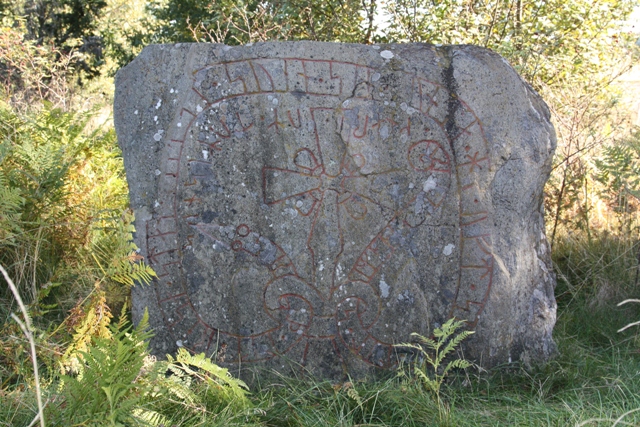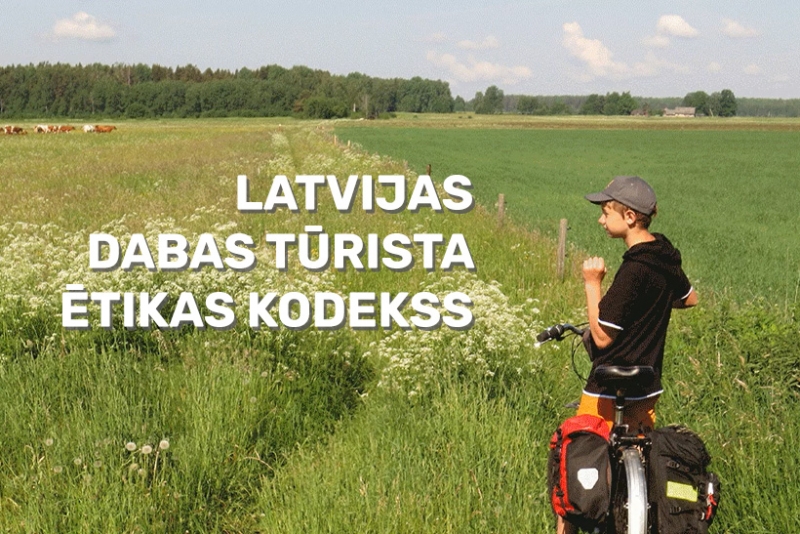The Mervalla stone

Photo by Juris Smaļinskis
The stone is often shown in other books and connections than just those which have to do with runes. That is because the stone is unusually informative, and that it says quite a lot about what the Vikings mainly did when going eastwards – namely trading.
The ornament is quite simple in its design, but characteristic for the region. An ordinary snake with big eyes, an elegant ring cross and an Irish belt. The stone has no signature, but it is most likely a work by Balle or by his disciple. It could also be possible that the author has taken part in some kind of travelling workshop with Balle as a master.
The interesting is of course the place names mentioned in the inscription. The end of the rune line is a so called “helning” in “fornyrdirslag”.
The text in the stone: “Sigrid had this stone put up after her husband Sven. He often sailed to Semgallien (Zemgale) with expensive ship (meaning loaded with expensive goods) around Domesnaes (Cape Kolka)."
The earliest researchers of runic inscriptions as Peringskioeld and Brocman meant that it was about some kind of warfare that Sven had taken part in, but it was more likely that Sven had been just a merchant. “Sigla dyrum knaerri” can only mean to sail with expensive goods, and that is what they have done towards Semgallien (Zemgale) which is the present region near the Riga Bay.
Domesnaes (Kolkasrags) is the cape farthest north just at the entrance to Riga Bay. The cape stretches with a dangerous underwater reef at least five kilometers out into the sea. This means that if you want to sail into the bay you have to sail much further north to get in. That Domesnaes (Kolkasrags) is mentioned, and that Sven has been there several times, indicates that it was considered as venerable to manage the difficulties with such a journey.
Furthermore it tells us today a great deal how they sailed their “knarr” (boat) in the Viking Era. It seems that they have taken the direction straight eastwards from Gotland instead of going via the Finnish Bay and along the coast of Estonia which would be more natural for the travelers at that time.
Semgallen (Zemgale) is also mentioned in the “saga” (story) about Ingvar den Vitfarne (Ingvar who traveled a lot) as that country Ingvar was sent to as young to claim tax.
The rune stone stands in the middle of a meadow in an island called Selaoen just before you come to Asa grave field from direction Stallarholmen. The whole ridge is just like one big grave field, and just some few yards from this stone there is a bigger circle of stones on the top of a hill. That can be the same stones which are mentioned in elder notes about the stone as Froejdenborg’s church (or hill). The name has probably come from a local idea that there had been a very old church nearby.
The surface of the stone is a bit damaged here and there which probably is caused by fire on the stone when it was lying down.
Source: http://www.svenskarunstenar.net/sormland/so198mervalla.html /
http://web.telia.com/~u58110628/so198mervalla.html by Staffan Blixt.



